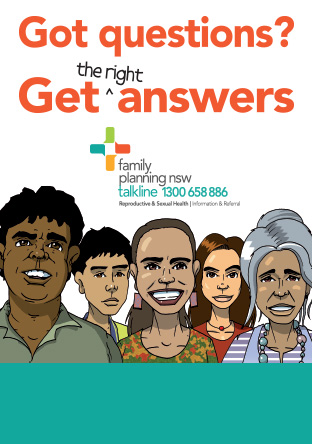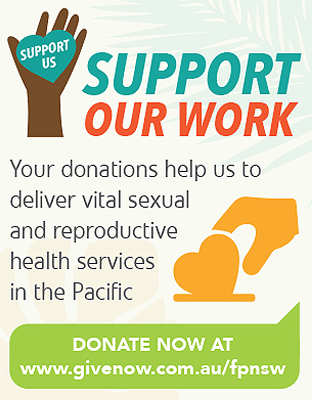Male (External) Condom
What is a condom?
There are two types of condoms:
- male condoms (external condoms) which are worn on the outside of the penis
- female condoms (internal condoms) which are worn inside the vagina
What is the male (external) condom?
The male condom is a thin, soft sheath which is open at one end and closed on the other. The most common type of male condom is a fine latex rubber sheath. Non-latex condoms made from other materials including polyisoprene are also available.
Condoms are already lubricated. Extra water-based lubricant can also be used on the outside of the condom. There are many brands, sizes and flavours of condoms. Find the type that is comfortable and enjoyable for you and your partner.
The male condom can be used to prevent pregnancy during vaginal sex. It can also be used to prevent sexually transmitted infections (STIs) during vaginal, anal and oral sex. STIs are infections which can be passed from one person to another during sexual activities that involve direct skin-to-skin contact and/or the exchange of bodily fluids. Condoms can be used on sex toys when they are shared between people. Condoms are the only method of contraception which prevent both unplanned pregnancy and STIs.
How does the male condom work?
The male condom is rolled onto an erect (hard) penis before having sex. It works by collecting semen, the fluid that contains sperm, so that the sperm cannot reach the uterus (womb). It also provides a barrier to prevent the transmission of STIs through skin to skin contact or the transfer of body fluids. Body fluids can include pre cum, semen and vaginal fluid. Condoms can only be used once then thrown away.
How well does the condom work?
Condoms are 98% effective at preventing pregnancy when they are used correctly. In real life they can be less effective (88% effective) because of incorrect use or breakage. Condoms are the most effective way to prevent STIs when they are used consistently and correctly. Condoms are more effective when they are used by couples experienced in their use. They need to be used correctly every time.
Male condoms can be combined with other more effective methods of contraception such as the contraceptive pill or an IUD. This provides effective contraception and prevents STIs at the same time.
If you think the condom hasn't worked (e.g. if it breaks or slips off during sex) the emergency contraceptive pill (ECP) is available from pharmacies. After unprotected sex, the ECP can be used within the next 120 hours to reduce the risk of unplanned pregnancy. If you are at risk of STIs it is important to seek advice about STI testing. If you think you are at risk of HIV, post-exposure prophylaxis (PEP) can lower the risk of getting this infection.
Call Family Planning NSW Talkline 1800 658 886 for advice on STI testing and emergency contraception.
For condoms to work best you must always:
- make sure you use a new one every time
- take care to put it on correctly
- use it the entire time you are having penetrative sex
- take it off correctly so it doesn't leak
- not use oil based lubricants
Are there any side effects?
There are no side effects, except if you are allergic to latex rubber or to the lubricant. If either person gets a rash or any discomfort, check with your doctor or visit a Family Planning NSW clinic near you. You can use non-latex condoms if you or your partner are allergic to latex rubber.
Advantages
- It is a safe short term method of contraception
- It provides protection against STIs
- It can be bought without a prescription
- Widely available
- Inexpensive - free condoms are available in many places
Disadvantages
- It has a higher failure rate than some other methods of contraception
- It is not reusable
Where can I get condoms?
Condoms are available from Family Planning NSW clinics, Condom Credit Card providers, sexual health clinics, supermarkets, pharmacies and online.
How do you use them?
- Condoms are individually wrapped in packets. Carefully open the packet, making sure you do not tear the condom with your fingernails.
- It will look like a circle of loose fine rubber with a thick rim, which is actually the rolled up condom. Make sure the rim is rolled towards the centre on the side facing you. This is important as it will then roll down properly.
- Hold and squeeze the tip of the condom, with your thumb and first two fingers. This will make space for the semen when the male ejaculates. Some condoms have a special shape like a nipple at the end especially for this purpose.

- The penis must be erect before you put on the condom. With the condom still rolled up, and while still holding the tip, put the condom on the head of the penis.

- Using your other hand (thumb and first two fingers), roll the condom all the way down to the base of the penis.

- Put some additional water-based lubricant on the outside of the condom if required.
- After sex and before the penis has become soft, hold onto the condom at the base of the penis so that the condom does not come off, and semen does not leak out, and carefully pull away from your partner.

- Take off the condom and tie a knot in the open end to keep the semen inside the condom.
- Wrap the condom in a tissue or some paper, and put it in the bin. Do not flush it down the toilet.

For more information
Family Planning NSW Talkline - www.fpnsw.org.au/talkline or 1300 658 886
National Relay Service (for deaf people) - 13 36 77
TIS National's interpreting service - 131 450
Family Planning NSW factsheet - Emergency Contraception
Visit your nearest Family Planning NSW clinic - www.fpnsw.org.au/clinics
Family Planning NSW client resource on contraception - What suits me?
Condom Credit Card - www.fpnsw.org.au/ccc


